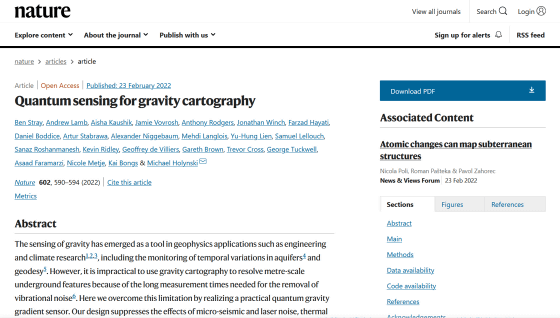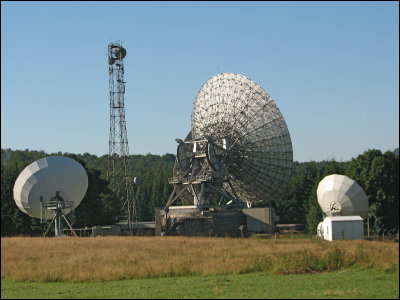Succeeded in the experiment of 'quantum gravity gradient sensor' that maps structures buried underground by the principle of quantum physics.

Researchers at the University of Birmingham, England, have succeeded in an outdoor experiment of a 'quantum gravity gradient sensor (quantum gravity graviometer)' that detects fluctuations in microgravity using the principles of quantum physics. By measuring the fluctuation of microgravity with high accuracy, the mapping of the underground structure is greatly improved, and it is expected to be useful for construction projects, prediction of volcanic eruptions, discovery of natural resources, archaeological surveys, etc.
Quantum sensing for gravity cartography | Nature

Sensor breakthrough paves way for groundbreaking map of world under Earth surface
https://www.birmingham.ac.uk/news/latest/2022/02/sensor-breakthrough-paves-way-for-groundbreaking-map-of-world-under-earth-surface.aspx
By measuring the fluctuation of gravity depending on the location with ultra-high accuracy, it is possible to map the natural and artificial structures buried underground, but the noise generated from the surrounding environment is an issue in the measurement. So, a research team at the UK National Quantum Technology Hub in Sensors and Timing , one of the UK's National Quantum Technology Research Hubs, led by the University of Birmingham, has developed a quantum gravity gradient sensor that overcomes vibrations and other environmental issues. ..
The quantum gravity gradient sensor is a gravity sensor based on the principle of quantum physics that measures the subtle changes in the tensile strength of the gravitational field that occur when multiple atoms are dropped. Since the tensile strength detected according to the size and density of the object to be measured also increases, it is possible to map structures that are buried underground and invisible to the eye.
It is difficult to put a quantum gravity gradient sensor to practical use outside the laboratory because vibration, tilt of the device, influence of magnetic field and heat field affect the quantum. However, the UK National Quantum Technology Hub in Sensors and Timing research team overcame this challenge and reported in a paper published in the journal Nature that they had successfully conducted an outdoor demonstration of the performance of quantum gravity gradient sensors. .. The quantum gravity gradient sensor developed by the research team was able to map the existence of a tunnel located 1 meter underground.

The successful demonstration experiment of the quantum gravity gradient sensor has opened a commercial path for mapping underground structures, which makes mapping underground structures cheaper and more reliable than conventional methods 10 more than existing methods. It is expected that it will be possible to provide twice as fast. According to a research team at the University of Birmingham, the following improvements can be expected from the development of the quantum gravity gradient sensor.
-Cost reduction and shortening of construction projects such as railways, buildings and roads.
-Improved prediction accuracy of natural phenomena such as volcanic eruptions.
・ Discovery of natural resources and artificial structures hidden underground.
-Archaeological investigation that does not damage valuable relics.
Professor Kai Bongs, Principal Investigator at the UK National Quantum Technology Hub in Sensors and Timing, said, 'This is the'Edison 's Moment'in the field of sensing that transforms society, human understanding and the economy.' May stop us from relying on poor records and luck when exploring, building, and rehabilitating. In addition, creating an invisible underground map says,'Under the city we live in. It's an important step to end the situation, 'I know more about what's in the South Pole than what's a few meters away.'
Related Posts:
in Science, Posted by log1h_ik







